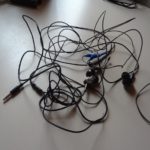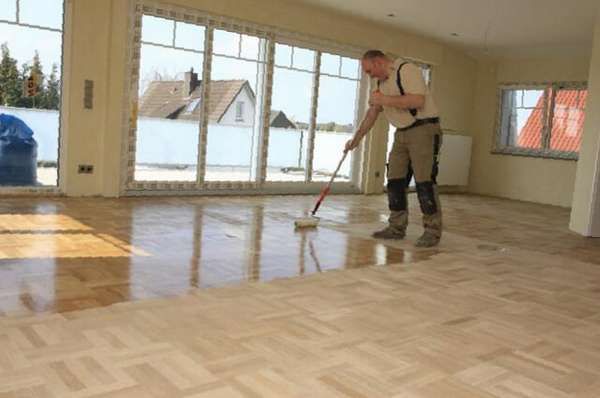How to eliminate parquet squeaking
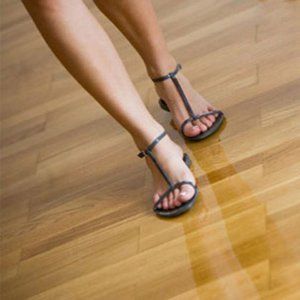 Despite the fact that the market offers a huge selection of floor coverings, good old parquet remains in high demand. Having a large number of advantages, among which environmental friendliness is considered the most important, it has one serious drawback. Over time, the planks become loose and a characteristic wooden creaking sound appears.
Despite the fact that the market offers a huge selection of floor coverings, good old parquet remains in high demand. Having a large number of advantages, among which environmental friendliness is considered the most important, it has one serious drawback. Over time, the planks become loose and a characteristic wooden creaking sound appears.
Besides the fact that this sound is very annoying, it will definitely notify all family members of your movement. This can sometimes be very inopportune, especially at night. Before you think about changing the coating, you might want to try eliminating the squeak yourself. In some cases this will not be difficult at all.
The content of the article
Causes of parquet creaking
Natural wood from which parquet is made tends to dry out over time. That is why creaking is considered an integral attribute of old wooden floors. However, for it to appear, the coating does not necessarily have to last a long time. There are many more reasons for its occurrence.
REFERENCE. The absence of chemical additives that could prevent the planks from deforming has a decisive influence on the appearance of unpleasant sounds in old parquet floors.
The main reasons for the appearance of squeaking, in addition to dried out planks, include: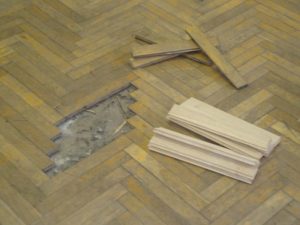
- broken groove for fastening parts (ridge);
- loosening nails and screws;
- displacement of the logs (bars to which the planks are nailed).
Poor floor installation often causes noise when walking. If there is no or insufficiently large gap (at least 10 mm is needed) between the wall and the parquet, the wood will deform as it expands.
In addition, the material is very sensitive to operating conditions. Too high humidity or inappropriate temperature quickly lead to unpleasant consequences.
How to eliminate parquet squeaking
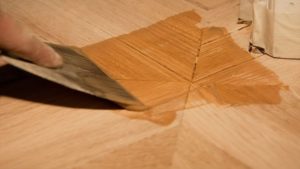
If the parquet creaks, the condition of the coating may be very poor. In this case, you will have to resort to a radical method - replacing it completely. But this will entail significant financial costs and is not always the only way out.
Most often, the creaking is local in nature. In such a situation, it is enough to simply repair the problem areas, and the parquet will still serve for a considerable period.
First you need to identify the places that need restoration. After a thorough walk around the entire floor, you need to mark areas with chalk. Before carrying out repair work, the cause of the squeak should be determined. If warped or misaligned parts are not visible, then the problem is not with them, but with an uneven floor or misaligned beams.
Having determined the cause of the squeak, you can begin restoring the floor using one of the methods described below.
Repairing small cracks
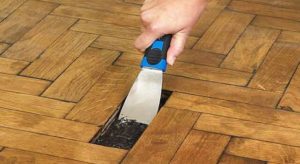
If cracks have formed between the parquet parts, you can get rid of them using wood putty. The color must be selected accordingly.
Casein glue with the addition of sawdust will also help in this situation.The final step is to sand these areas with sandpaper and varnish the surface.
ATTENTION! Repairing the cracks will solve the problem for a short time. For high-quality repairs, you will need to identify and eliminate the cause of their appearance.
Replacing slats
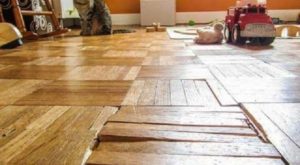
Eliminating squeaks by replacing the die is a more drastic method that should be used in the case of large cracks.
This is done in this order.
- Remove the damaged part after splitting it. To do this, use a chisel and hammer.
- Clean the area with a sharp tool and sandpaper.
- Prepare a new bar. To do this, you will have to get rid of the ridge by cutting it evenly.
- Fill the cavity with suitable glue. You can use heated bitumen mastic.
- Install a new die, press it down with a weight and let it dry.
- Clean off any excess glue and varnish the floor.
If it is necessary to replace several parts, it is better to do this by first connecting them together. You need to install them in place, making sure that they fit perfectly.
Gluing parquet to the base
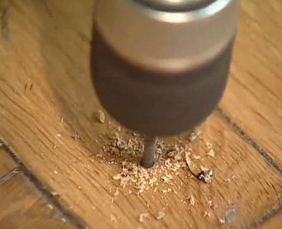
If the cause of the creaking is an area that has become detached from the base for some reason, you can use the method of pouring glue under it.
- To do this, drill holes in the creaking die at a distance of about 15 cm.
- To avoid severe contamination of the floor with glue, seal these areas with masking tape.
- Then use a syringe to inject the adhesive into the holes.
- Press down the area to be repaired with a heavy weight and let it dry.
- Remove any remaining glue and masking tape, seal the holes with wax or putty, and cover the area with varnish.
Fastening problem areas with self-tapping screws
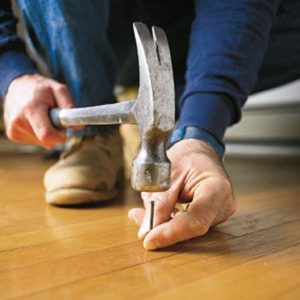
Sometimes nails, which are often used to connect parquet strips to joists, can become loose. In this case, to further strengthen the parts and get rid of squeaks, a good solution would be to use self-tapping screws. The problem here can be the difficulty of determining where the beam is located.
To fasten it, you need to drill holes in the floor and the block with a drill. Connect the parts with self-tapping screws. Planks fixed in this way will hold much more securely and remain silent longer than with nails.
Pouring cement under plywood
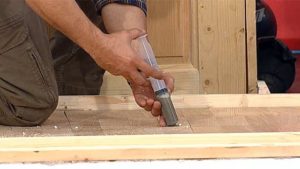
Sometimes, when installing the floor, workers neglect the rules and do not level the concrete with a screed. Plywood or fiberboard installed on an uneven surface will sag over time and cause squeaks.
If unpleasant noise occurs due to the substrate peeling off from the concrete floor, there is the option of pouring liquid cement mortar. This will fix the part and eliminate the annoying sound.
To do this, you need to perform the following steps.
- Remove several strips of parquet from the repair area.
- Drill a hole in the plywood to fill the mortar. A diameter of 2 cm will be sufficient.
- Prepare a liquid solution. The ratio of cement to water is 1:1.
- Pour into the hole until the cavity is filled.
- Allow to dry (at least 24 hours).
- Reinstall the removed strips.
It is not necessary to remove part of the parquet for filling. You can instead drill holes directly into the dies. After completing the work, they will have to be covered with putty and varnished.
What to do to prevent parquet from squeaking
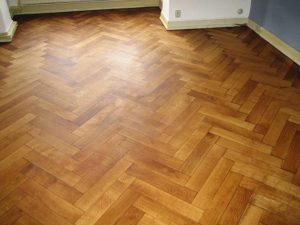
In order for a parquet floor to last for a long time without making unpleasant noises, first of all you need to take care of the quality of the materials from which it will be made.Not every tree will last equally long as a floor covering. The best for these purposes are considered to be maple, beech, oak, wenge, Brazil walnut, ash, and teak. Don't forget about high-quality glue and good screws for fastening.
At the stage of laying the floor, the following rules must be observed.
- Make sure that the surface on which the parquet will be laid is perfectly flat.
- Pay attention to the presence of temperature gaps between the floor and walls (at least 1 cm).
- Don't forget about the moisture content of the wood used. If it is too high, the parquet will dry out and squeaks will appear very soon.
If possible, you should entrust this work to professionals who know all the installation rules and will ensure their compliance.
During operation, monitor the temperature and humidity in the room.
These are the basic rules, following which you can significantly extend the service life of the coating. The tree does not like too low or high temperatures, as well as high humidity. You can also use special parquet care products that will preserve the coating for many years.


